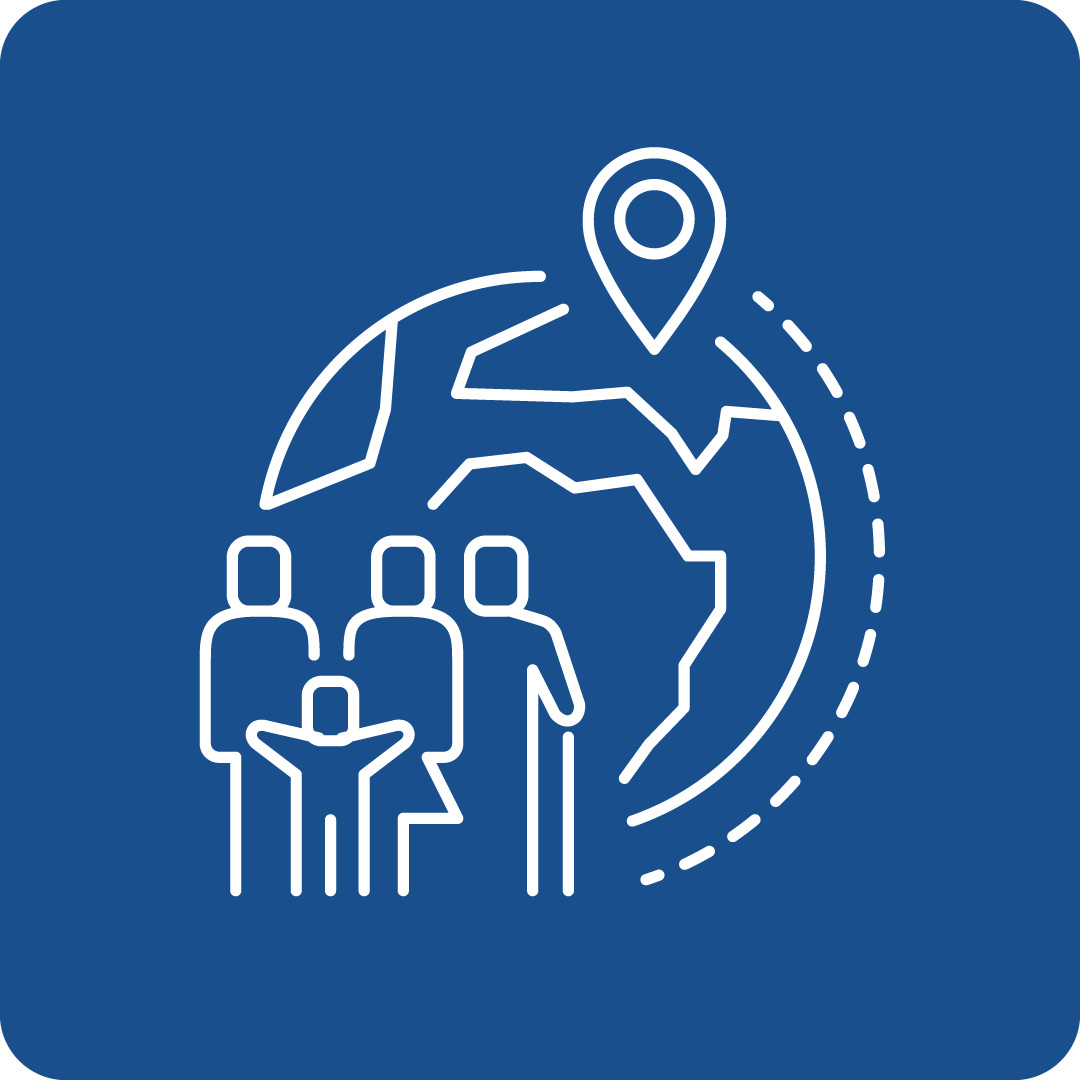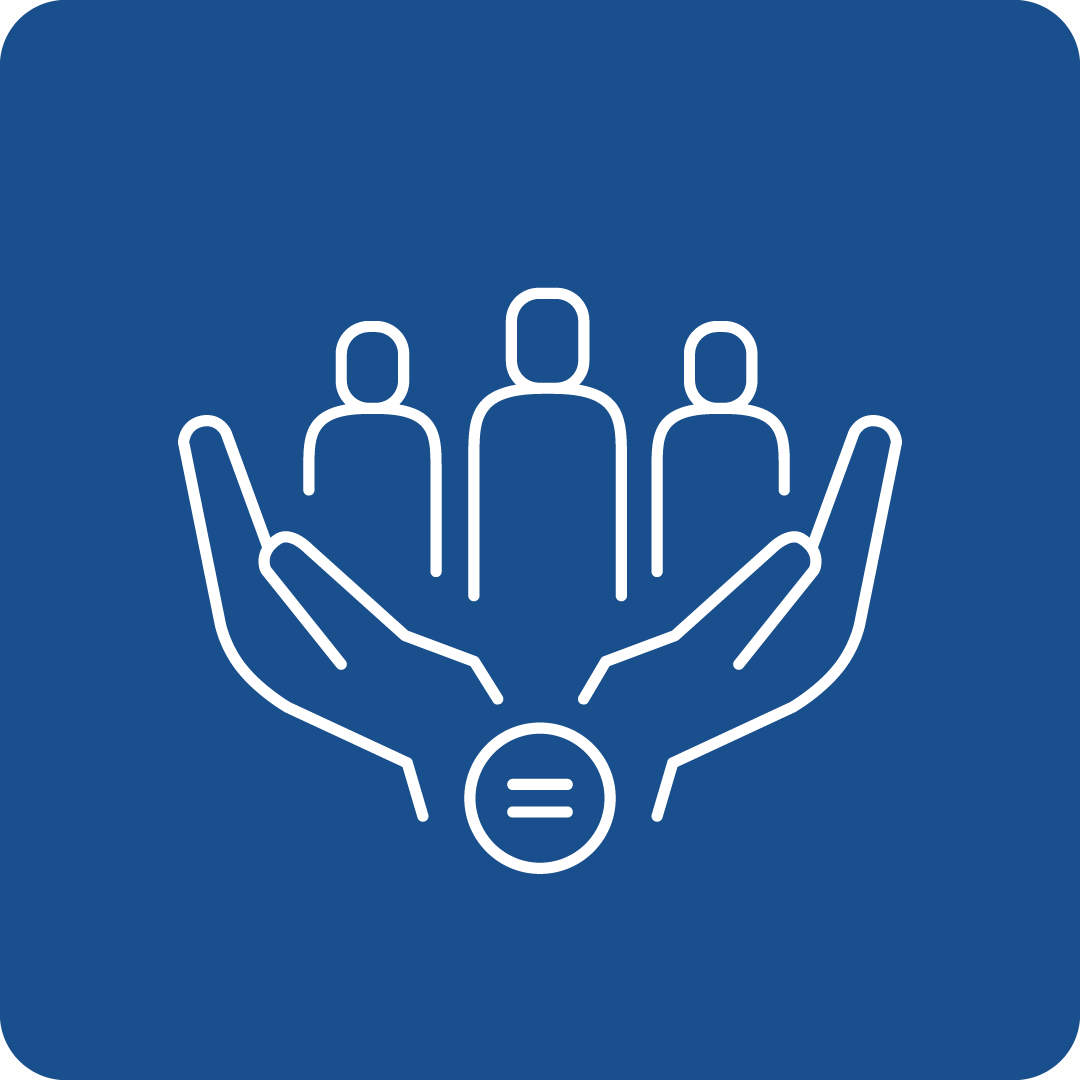Filter Search for grants
Call Navigation
Deadline expired
The deadline for this call has expired.
Call key data
Call for proposals to prevent and combat gender-based violence and violence against children
Funding Program
Citizens, Equality, Rights and Values programme
Call number
CERV-2024-DAPHNE
deadlines
Opening
12.12.2023
Deadline
24.04.2024 17:00
Funding rate
90%
Call budget
€ 24,800,000.00
Estimated EU contribution per project
between € 100,000.00 and € 2,500,000.00
Link to the call
Link to the submission
Call content
short description
The aim of this call for proposals is to fight violence, including gender-based violence and violence against children.
Call objectives
Objectives:
- Preventing and combating at all levels all forms of gender-based violence against women and girls in all their diversity and domestic violence, including by promoting the standards laid down in the Council of Europe Convention on preventing and combating violence against women and domestic violence;
- Preventing and combating all forms of violence against children, young people and other groups at risk, such as LGBTQI persons and persons with disabilities;
- Supporting and protecting all direct and indirect victims of the forms of violence referred to in points (1) and (2), such as the victims of domestic violence perpetrated within the family or within intimate relationships, including children orphaned as a result of domestic crimes, and supporting and ensuring the same level of protection throughout the Union for victims of gender-based violence.
Priorities:
1. Large-scale and long-term transnational actions on tackling gender- based violence
In line with the Gender Equality Strategy, this priority aims to support the development of large-scale, integrated actions to combat gender-based violence and achieve long-term and structural changes with a wide geographical coverage.
All forms of gender-based violence can be addressed under this priority through prevention, gender-sensitive protection and support to victims. The objective is to achieve balanced coverage of actions across different areas of intervention in line with the priorities of the Gender Equality Strategy.
To do this, a number of transnational proposals will be selected, each focusing on one of the areas set out below:
- domestic violence: increasing awareness of and access to support services for (potential) victims, strengthening gender-specific responses to domestic violence (including for witnesses of domestic violence), through capacity- building and multi-disciplinary strengthened cooperation and coordination among relevant actors;
- harmful practices: tackling female genital mutilation, intersex genital mutilation, forced abortion, forced sterilisation, child and forced marriage, honour-related violence and other harmful practices against women and girls;
- gender-based cyber violence: tackling gender-based cyber violence, such as incitement to violence, online stalking, non-consensual image sharing, extortion with the use of sexual imagery ('sextortion'), sexual or gendered online harassment and bullying, grooming, etc;
- violence and harassment in the world of work: tackling physical and psychological offline and online violence or harassment in work contexts by, in particular, preventing such unwanted behaviours, encouraging the development and implementation of remedies and victim support mechanisms, and the development of relevant tools, guidance, education and training;
- gender stereotypes: preventing gender-based violence by tackling prejudices and gender stereotypes, in particular those related to masculinities, norms, attitudes and behaviours that encourage, condone or minimise violence, as well as by providing women and men, girls and boys, in all their diversity, with the tools to call out and stand up to violence through empowerment and bystander intervention programmes.
In order to guarantee on-the-ground interventions and wide coverage, the application should be made by partnerships that ensure collaboration with the relevant actors in the chosen area as well as with organisations guaranteeing a multiplier effect. Applications should also strive to reach out to a large number of participants in different geographical areas of the EU.
Applications will have to develop a long-term programme of intervention in view of achieving sustainable changes in the policies, activities, attitudes and behaviour of the relevant actors in the chosen areas. The aim is that the relevant actors integrate the actions under the grant in their respective fields of activity (e.g. companies, municipalities, schools/universities, health services, humanitarian services etc.). Applications will have to demonstrate the long term sustainability of project results and outcomes. This can notably be done by implementing actions targetting systemic change through e.g. structural reforms, explicit commitments among key stakeholders, improved work processes, policies and/or practices.
Activities and project outputs should contribute to changes at a structural level with a positive impact that can be maintained, or further enhanced after the end of the project.
Projects are encouraged, in their interventions, to envisage the use of new and innovative tools, methods and applications which can also contribute the achieving sustainable effects. They can cover new inter-disciplinary ways of working, reaching out to target groups, establising dialogue with professionals, victims etc.
Finally, proposals must include an effective and detailed monitoring and evaluation system, which will enable partners to evaluate the impact of their intervention.
Projects addressing this priority should pay attention to the specific needs and circumstances of women and men, girls and boys, in all their diversity.
Indicative funding available for this priority: EUR 11 000 000. Projects have to be transnational.
2. Targeted actions for the protection of and support for victims and survivors of gender-based violence
This priority will focus on the protection of and support for victims of gender-based violence, including children. This includes:
- Targeted and gender-sensitive protection and support for groups at a heightened risk of violence (e.g. people with a migrant background including children in migration, LGBTIQ persons, racial or ethnic minorities which include Roma people, women or children with disabilities or facing mental health issues, pregnant women, women in detention, women living in rural areas, women living and/or working on the street, children in alternative care, persons in prostitution, elderly women), including through tackling under-reporting;
- Targeted and gender-sensitive support to victims of sexual violence (including sexual exploitation/trafficking for the purposes of sexual exploitation, and in the context of armed conflict) and other specific forms of harm;
- Promoting multi-disciplinary cooperation, including online, among relevant professionals, including on the model of Children’s houses (Barnahus) or the model of the Family Justice Centres. Strengthening referrals between relevant national actors (e.g. law enforcement, the judiciary, support service providers, health and social service professionals) and multidisciplinary, including psycho-social, support; and
- Provision of support through national helplines dedicated to victims of violence against women (support to initial establishment of such helplines in Member States where these are not yet available, awareness-raising of available support through helplines).
Indicative funding available for this priority: EUR 4 800 000. Projects can be either national or transnational. Transnational projects are particularly encouraged.
3. Targeted actions for the prevention of gender-based violence, in the domestic sphere, in intimate relationships, and online, including through targeted actions with perpetrators
Under this priority, gender-based violence will be prevented through:
- The development of gender-sensitive tools for the prevention of domestic violence that help recognise and address early signs of violence, including less visible forms of violence such as coercive control and psychological violence. This is done, for example, through assessing existing screening methods and enhancing the development and utilisation of evidence-based systematic screening methods for signs of domestic violence by medical practitioners (or other practitioners in services not directly linked to domestic violence support, for example social or educational services).
- The development of gender-sensitive measures for the prevention of violence in intimate relationship that promote equal relationships, address harmful stereotypes and give tools for peaceful conflict resolution in relationships. Actions will include (but are not limited to): education and awareness raising, training and practical activities to tackle prejudices and gender stereotypes, norms, attitudes and behaviours that encourage, condone or minimise violence, in particular in relationships; activities that promote respectful and conscious choices regarding all aspects of relationships and reduce the risk of violence.
- Measures for the prevention of gender-based cyber violence that strengthen the media literacy of online users and reinforce positive narratives on gender equality and the role of women in public decision-making roles such as in politics and journalism, as well as measures for the prevention of cyber intimate partner violence, empowering non-governmental organisations and other relevant actors to prevent and address gender-based cyber violence, including as trusted flaggers on online platforms.
- Perpetrator programmes to prevent (re)offending, with a victim-centred approach and a focus on harmful stereotypes, peaceful conflict resolution in relationships and toxic masculinities.
Indicative funding available for this priority: EUR 5 000 000. Projects can be either national or transnational. Transnational projects are particularly encouraged.
4. Targeted actions making integrated child protection systems work in practice
Children may face different forms of violence. Exposure to violence severely affects a child’s physical, psychological and emotional development. It may affect their ability to go to school, to interact socially and to thrive. It can lead to mental health issues, chronic diseases, self-harm tendencies, even suicide. Children in vulnerable situations can be particularly affected.
The promotion of integrated child protection systems is intrinsically linked to the prevention and protection from violence. With the child at the centre, all relevant authorities and services should work together to protect and support the child, in their best interests.
The overall aim of this priority is to contribute to systemic changes to prevention, protection and support to children in cases of violence through integrated child protection systems, i.e. through multi-disciplinary cooperation between relevant cross-border/national/regional/local authorities and education, child protection, judicial authorities, psychosocial support and social services, health care professionals, care professionals and educators, among others, responding to children’s needs. This can include but will not be limited to the development of tools and measures for:
- the prevention of violence against children, including but not limited to awareness raising (including children’s rights awareness and education), training, certification, standards and accreditation procedures for professionals and persons in contact with children, with a specific attention to children in vulnerable situations and at specific risk of violence;
- early identification (that helps recognise and address early signs of violence) and reporting of cases of abuses, strengthening child-friendly referrals between relevant national actors (e.g. law enforcement, the judiciary, support service providers, health and social service professionals), multidisciplinary assessment;
- multidisciplinary support, through integrated response activities, involving medical, psychosocial, legal, care support, and close coordination between authorities and actors at all levels;
- setting up accountability mechanisms on the basis of indicators, (self-) evaluation, data collection, including the development of self-monitoring and evaluation tools on the performance of child protection systems, and data on violence against children.
Taking into consideration the overall framework on integrated child protection systems, this priority will help to prevent and combat all forms of violence against children, and notably:
- harassment and (sexual) violence, notably happening in the formal and informal educational context, in leisure, cultural, sportive, or any community or recreational activities, in the domestic context, where children might be in specific situations of vulnerability; and
- online and offline bullying, notably at school or in leisure activities, and affecting children with specific vulnerabilities (e.g. children in alternative or foster care, children with disabilities, including mental disabilities, Roma children, children with a migrant background), or link to their religion, belief, gender or sexual orientation.
Children should be given the opportunity to participate in a safe, meaningful and inclusive way at the different stages of the implementation and monitoring of the projects. Strong attention should be paid to child protection safeguards given the sensitivity of the topic for any child, should it be in awareness-raising activities, or in any contact with child victims, witnesses or perpetrors.
Indicative funding available for this priority: EUR 4 000 000. Projects can be either national or transnational. Transnational projects are particularly encouraged.
read more
Expected effects and impacts
1. Large-scale and long-term transnational actions on tackling gender-based violence:
- Systemic changes through e.g. structural reforms, explicit commitments and changes of processes, protocols, policies and practices of organisations/companies/structures etc;
- Increased capacity of stakeholders and relevant professionals to address issues related to gender-based violence, including through strengthened multi-agency cooperation;
- As well as expected results mentioned for the other priorities below (corresponding to the form of gender-based violence addressed).
2. Targeted actions for the protection of and support for victims and survivors of gender-based violence:
- Victims from particularly vulnerable groups can better access protection and support services that address their specific needs;
- Increased capacity of stakeholders and relevant professionals in contact with these groups to address issues related to gender-based violence and violence against children, including through strengthened multi-disciplinary cooperation;
- Increased reporting of violence to the police and other services, with appropriate mechanisms in place to facilitate this;
- Increased quality of victim support services, including those providing for targeted and integrated support for victims with specific needs, such as victims of sexual violence including in the domestic context, victims of violence in close- relationships, providing for trauma support and counselling;
- Increased awareness of gender-based violence, including gender-based sexual violence, including in the context of migration and/or in the context of armed conflict;
- Structures for the prevention of and responses to violence against women, children and other groups particularly targeted are extended or adapted to also include refugees and other migrants; improved protection and support standards for victims of gender-based violence including people in migration;
- Strengthened cooperation and exchange of information between competent European/national/regional/local authorities in relation to sexual and gender-based violence and to violence against children, including in cross-border situations;
- Cross-border cases of violence are properly addressed, through the application of Directive 2011/99/EU on the European protection order.
3. Targeted actions for the prevention of gender-based violence, in the domestic sphere, in intimate relationships, and online, including through targeted actions with perpetrators:
- Increased promotion and support of gender-sensitive prevention of violence in close relationships through awareness raising, sharing of information and knowledge and the creation and dissemination of training opportunities;
- Increased awareness of prejudices, gender stereotypes and norms that contribute to the tolerance of gender-based violence;
- Increased awareness and engagement of men and boys in tackling gender-based violence against women;
- Increased capacity of stakeholders and relevant professionals to address issues related to gender-based violence and engagement of men and boys, illegal online content, including through strengthened multi-agency cooperation;
- Increased capacity of professionals not directly linked to domestic violence to recognise and address issues related to gender-based violence;
- Increased empowerment of (potential) victims of violence to claim their rights and to stand up to violence;
- Changed attitude and behaviour as regards the issue of gender-based violence, (including lower tolerance and decreased victim-blaming):
- among the general population and particular groups, e.g. relevant professionals, witnesses and bystanders, vulnerable groups, etc.
- among men and boys.
- Changed attitudes and behaviour as regards the issue of illegal online content targeting women and girls among the general population and particular groups, e.g. relevant professionals, witnesses and bystanders, vulnerable groups;
- Early signs of violence are detected and reported; increased reporting of violence to the police and other services, with appropriate mechanisms in place to facilitate this.
- Increased treatment of perpetrators of violence;
- Increased attention to, support and treatment for female prisoners as a vulnerable group, who may be perpetrators, witnesses and victims of violence;
- Violence including online is prevented before it happens; reduced risk of violence escalating; increased safety of women and their children and others at risk from violence in close relationships and online violence.
4. Targeted actions making integrated child protection systems work in practice
- Strengthened integrated child protection systems centered on children’s needs;
- Strengthened multisectorial prevention, protection and support to children suffering violence and in need of protection;
- Reinforced capacity of professionals to prevent, detect and respond to violence against children and child protection, including increased cooperation among relevant services;
- Reinforced monitoring of the effectiveness of child protection systems.
read more
Expected results
Activities shall include:
- Development of tools to help recognise and address early signs of domestic violence and violence against children;
- Awareness-raising, including social media or press campaigns, outreach and empowerment activities, including communication activities and dissemination of information;
- Capacity building and training for professionals and relevant stakeholders, in particular train-the-trainer programmes, training activities of national, regional and local authorities;
- Design and implementation of strategies, protocols, development of transferable working methods and tools, coordination platforms and groups;
- Design of services and measures improving access to victim support services;
- Identification and exchange of good practices, cooperation, mutual learning, development of working and learning methods, including transferable mentoring programmes;
- Development of guidelines and manuals for specialised support services (e.g. in the work place, schools, universities, online);
- Analytical activities, such as data collection and research, and the creation and implementation of tools or data bases/data collection strategies and systems.
Applicants should explain in their proposal the potential different impact of the project and its activities on women and men as well as girls and boys in all their diversity. Thereby, unintended negative effects of the intervention on either gender should be forestalled (do no-harm approach).
Applying organisations are encouraged to use, disseminate and build on already existing materials (e.g tools, projects’ deliverables, handbooks, research, studies, mapping exercises, reports, etc).
Practical projects developing and implementing specific measures are preferred. Measures should be developed and implemented with a view to be sustainable in the long-term with lasting results and aiming at systemic changes, in particular for priority 1. While research is not excluded, if research activities are to be part of the project, they must be strictly linked to the project as a whole and are to pay duly attention to gender and disaggregate data by sex.
read more
Eligibility Criteria
Regions / countries for funding
Albania (Shqipëria), Bosnia and Herzegovina (Bosna i Hercegovina / Босна и Херцеговина), Kosovo (Kosova/Kosovë / Косово), Montenegro (Црна Гора), Serbia (Srbija/Сpбија), Ukraine (Україна)
eligible entities
Education and training institution, International organization, Non-Profit Organisation (NPO) / Non-Governmental Organisation (NGO), Other, Private institution, incl. private company (private for profit), Public Body (national, regional and local; incl. EGTCs), Research Institution incl. University, Small and medium-sized enterprise (SME)
Mandatory partnership
Yes
Project Partnership
Proposals must be submitted by a consortium of at least 2 applicants (beneficiaries; not affiliated entities).
In order to be eligible, the applicants (beneficiaries and affiliated entities) must:
- be legal entities (public or private bodies)
- be established in one of the eligible countries, i.e.:
- EU Member States (including overseas countries and territories (OCTs))
- non-EU countries: − countries associated to the CERV Programme or countries which are in ongoing negotiations for an association agreement and where the agreement enters into force before grant signature (list of participating countries)
To be eligible under the first priority, grant applications must comply with all of the following criteria:
- Lead applicants must be non-profit making. Organisations which are profit-oriented cannot submit applications as lead applicants, but only in partnership with public entities, private non-profit organisations, or international organisations;
- the project has to be transnational;
- the application must involve at least two organisations (applicant and partner from 2 different eligible countries, not being affiliated entity or associated partner);
- the EU grant applied for cannot be lower than EUR 1 000 000 and higher than EUR 2 500 000.
- Projects should normally range between 24 and 36 months.
To be eligible under the second, third and fourth priority, grant applications must comply with all of the following criteria:
- Lead applicants must be non-profit making. Organisations which are profit-oriented cannot submit applications as lead applicants, but only in partnership with public entities, private non-profit organisations, or international organisations;
- the project can be either national or transnational;
- the application must involve at least two organisations (applicant and partner not being affiliated entity or associated partner);
- the EU grant applied for cannot be lower than EUR 100 000 and higher than EUR 1 000 000.
- Projects should normally range between 12 and 24 months.
other eligibility criteria
Natural persons are NOT eligible (with the exception of self-employed persons, i.e. sole traders, where the company does not have legal personality separate from that of the natural person.
International organisations — International organisations are eligible. The rules on eligible countries do not apply to them.
Entities which do not have legal personality under their national law may exceptionally participate, provided that their representatives have the capacity to undertake legal obligations on their behalf, and offer guarantees for the protection of the EU financial interests equivalent to that offered by legal persons.
EU bodies — EU bodies (with the exception of the European Commission Joint Research Centre) can NOT be part of the consortium.
Entities composed of members may participate as ‘sole beneficiaries’ or ‘beneficiaries without legal personality’ . Please note that if the action will be implemented by the members, they should also participate (either as beneficiaries or as affiliated entities, otherwise their costs will NOT be eligible).
Financial support to third parties is not allowed.
Additional information
Topics
Relevance for EU Macro-Region
EUSAIR - EU Strategy for the Adriatic and Ionian Region, EUSALP - EU Strategy for the Alpine Space, EUSBSR - EU Strategy for the Baltic Sea Region, EUSDR - EU Strategy for the Danube Region
UN Sustainable Development Goals (UN-SDGs)
![]()
![]()
![]()
![]()
project duration
between 12 and 36 months
Additional Information
Proposal page limits and layout:
- Application Form Part A — contains administrative information about the participants (future coordinator, beneficiaries and affiliated entities) and the summarised budget for the project (to be filled in directly online)
- Application Form Part B — contains the technical description of the project (to be downloaded from the Portal Submission System, completed and then assembled and re-uploaded)
- Part C — contains additional project data and the project’s contribution to EU programme key performance indicators (to be filled in directly online)
mandatory annexes and supporting documents (to be uploaded):
- detailed budget table/calculator (template available in the Portal Submission System – to be re-uploaded filled out in the format .xlsx)
- CV (standard) of core project team
- Activity reports of last year
- list of previous projects of the coordinator (key projects for the last 4 years) (template available in Part B)
- For participants with activities involving children: their Child Protection Policy (CPP) covering the four areas described in the Keeping Children Safe Child Safeguarding Standards. It should be clearly indicated in the application which partner(s) will work directly with children/minors.
Page limit - part B: 45 pages
The grant will be a lump sum grant.
Call documents
Call document CERV-2024-DaphneCall document CERV-2024-Daphne(829kB)
Contact
To see more information about this call, you can register for free here
or log in with an existing account.
Log in
Register now



